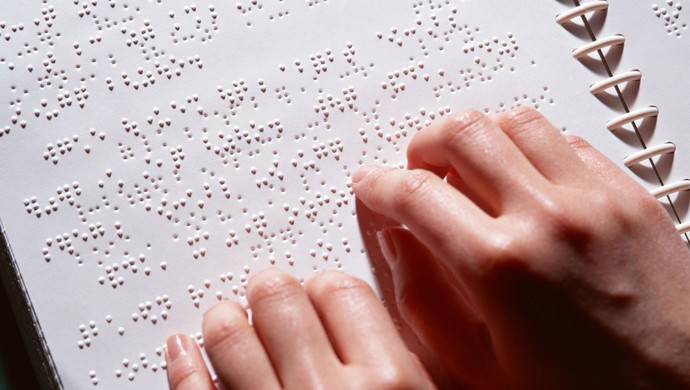A Shanghai research team has devised a skin-like flexible pressure sensor, which might help realize the intelligent recognition of Braille patterns.
The sensor was developed by Dr. Wang Jiacheng at the Shanghai Institute of Ceramics, Chinese Academy of Sciences (CAS), Prof. Lu Hongliang and Prof. Zhang Wei from Fudan University. Their research result was published in the journal “Nano Energy”.

Braille is an important way for the visually impaired to communicate with the outside world. However, the existing Braille recognition methods demand manual operation and can hardly ensure the precision of recognition. Data released by the World Health Organization (WHO) shows that the total number of blind people in the world is about 40 million, while the largest blind population are from China. It is therefore of great significance to develop a high-precision and practical Braille recognition device. The development of flexible electronic technology has made the exploration in intelligent sensing popular among researchers, such as wearable gadgets and bionic electronic skin. The emergence of flexible sensing technology has subverted people’s conventional perception of the form and function of traditional sensors. Electronic skin is such a new device which can simulate human skin’s ability to feel of external stimuli (including pressure, temperature, and humidity), by means of the integration and feedback of electrical signals.
In their research, the researchers came up with a skin-like flexible pressure sensor, which can be applied in the intelligent recognition of Braille. Consisting of three parts which correspond to the epidermis, dermis and subcutaneous tissue of human skin, the sensor boasts a sensitivity of 1/507 kPa (kilopascal), better than other similar devices.
Moreover, with the Random Forests method (a classification algorithm consisting of many decisions trees), Braille patterns can be recognized in real time. In the future, the research team will expand their work to larger-sized, self-powered, high-resolution and highly sensitive sensors, to realize the industrialization of flexible sensors and facilitate the rapid development of robotics and wearable technology.
